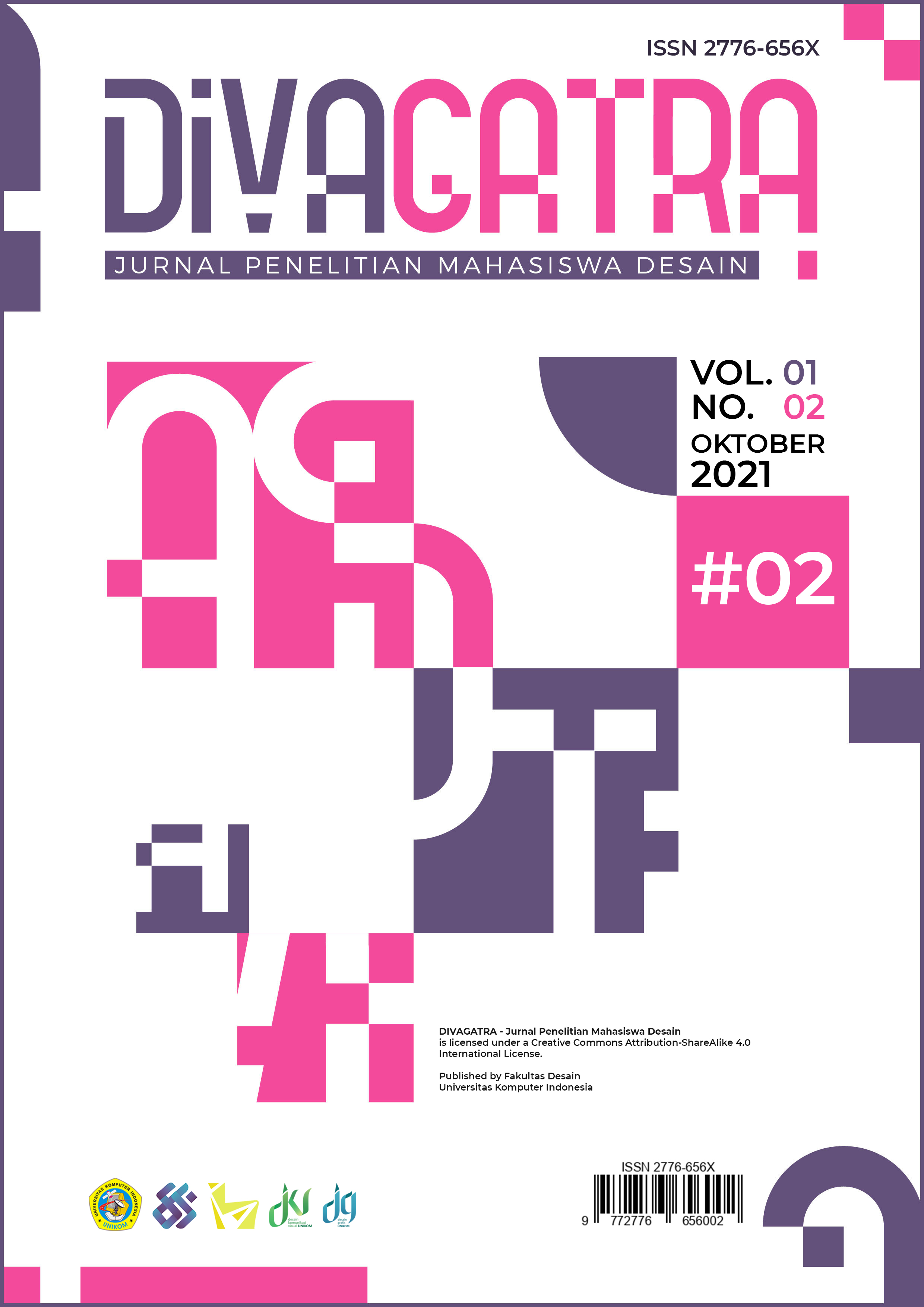Desain Ilustrasi Booklet Profesi Jamu Gendong Di Era Milenial
Main Article Content
Abstract
Herbal medicine is one of the Javanese cultures that existed in ancient times during the Majapahit era. Along with the times of technological advances in terms of modes of transportation, now many herbal medicine sellers use vehicles and do not hold their herbs. The identity of the herbal medicine profession has also begun to shift from cultural values because it no longer uses kebaya and batik cloth. Through current convenience, the seller of herbal medicine is more looking at the economic and practical aspects. So, the problem is the millennial generation thinks that this is only a normal profession and does not have any cultural value. Plus the herbal medicine profession has begun to be scarce in some rural and urban areas; it is difficult for millennials to interact directly with this profession. Whereas carrying herbal medicine is one area of work that is quite helpful in the economy of some circles of society. So the design is important to do to provide information on the carrying herbal medicine profession for millennials. The booklet is a medium that will be used in the design to provide information on the existence of the carrying herbal medicine profession.
Article Details
Section
![]()
Authors who publish articles in DIVAGATRA agree to the following terms:
- Authors retain the copyright of the article and grant the journal right of first publication with the work simultaneously licensed under CC-BY-SA or The Creative Commons Attribution–ShareAlike License.
- Authors can enter into separate, additional contractual arrangements for the non-exclusive distribution of the journal's published version of the work (e.g., post it to an institutional repository or publish it in a book), with an acknowledgment of its initial publication in this journal.
- Authors are permitted and encouraged to post their work online (e.g., in institutional repositories or on their website) before and during the submission process, as it can lead to productive exchanges, as well as earlier and greater citation of published work (See The Effect of Open Access).
How to Cite
References
Luxemburg, dkk. (1990). Pengantar Ilmu Sastra Terjemahan Diek Hartoko. Jakarta: Gramedia.
Marthana. Y. (2016). Imagologi Mbok Jamu Sebagai Representasi Wanita Etnis Jawa Tradisional dalam Diskursus Stereotype Citra. Jurnal Studi Kultural, Vol. 1, 1-6. DOI: 10.5281/zenodo.815082
Setyanti, C.A. (2015, April 23). Alasan Anak Muda Enggan Minum Jamu. CNN Indonesia. Diunduh dari: https://www.cnnindonesia.com/gayahidup/201504222 03911-262-48586/alasan-anak-muda-enggan-minum-jamu (2 Oktober 2019)
Sihombing, D. (2015). Tipografi Dalam Desain Grafis. Jakarta: Gramedia.
Soedarso, S. (1990). Tinjauan Seni. Yogyakarta: Saku Dayar Sarana.
Sukini. (2018). Jamu Gendong Solusi Sehat Tanpa Obat. Jakarta Timur: Badan Pengembangan dan Pembinaan Bahasa.
Ulum, B. (2018, Maret 9). Jamu Gendong Keliling Semakin Langka. Kompasiana. Diunduh dari: https://www.kompasiana.com/penaulum/5aa1f8dcbde5 7511c413e952/jamu-gendong-keliling-semakin-langka?page=all (6 Oktober 2019)

